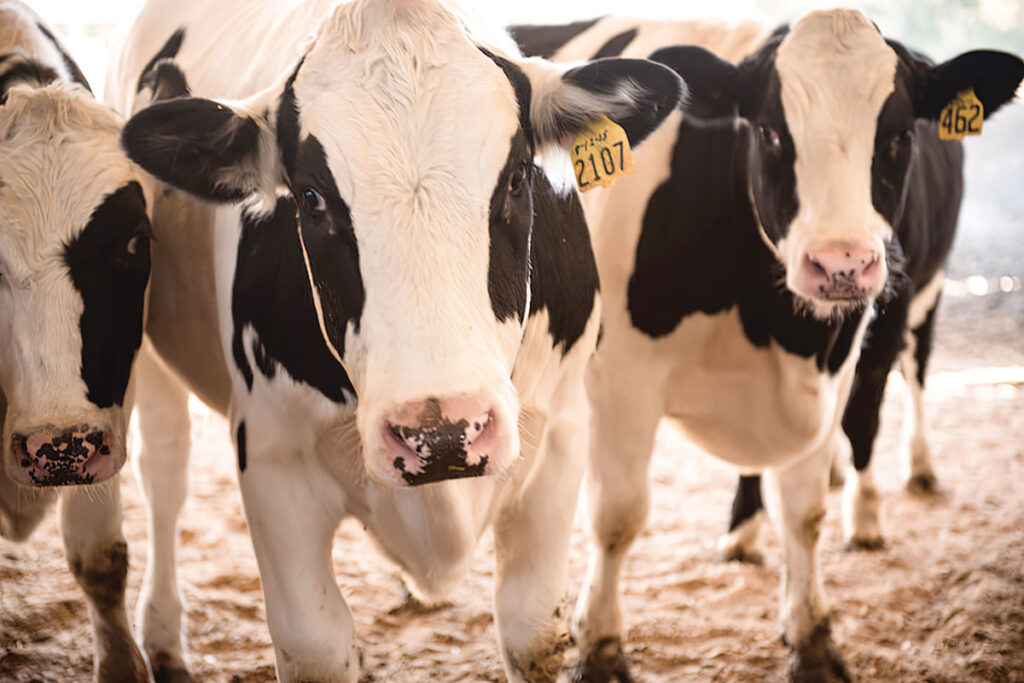
Strategies for success in the steer market
For some dairy farmers, raising dairy steers may feel like operating a completely different enterprise. In order to make money in this endeavor, livestock specialists encourage producers to plan out a strategy, assess the market, calculate the costs and develop a feeding program.
“If you can have a strategy to get to the end point, I think there is an opportunity to have a separate line or stream of income coming in to add value to your bull calf,” Reagan Bluel, dairy field specialist with the University of Missouri Extension, said.
Know the Market
Before venturing into developing and selling steers, producers should know their market. Experts recommend farmers research to determine if there is a market for dairy steers in their region.
In parts of the country, producers may find it challenging to secure buyers for their purebred Holstein steers.
“In a lot of our Kansas and Texas packing plants, they are refusing to take these straight dairy animals because of their large frames,” Paul Beck, Ph.D., livestock specialist with Oklahoma State University, said.
The purebred Holstein steers finish with a large frame and carcass weight, causing them to run into a heavy weight carcass discount at the sale barn. In addition, some packing plants shy away from heavy weight dairy steers out of possible health concerns.
“They are on feed for a very long time, so there is a higher incidence of liver abscesses in them,” Beck stated. “So, it’s been harder to sell those in our normal commercial markets in a lot of areas.”
However, dairy composite or crossbred steers are more marketable.
“They are very efficient and very good doing cattle,” Beck explained. “And a lot of these, by the time they are finished, they don’t look as dairy influenced as you think. A lot of them just look like really good Angus-cross cattle.”
Know All the Costs
Now more than ever the price of inputs, such as corn, has a significant impact on profits. Producers should calculate their projected expenses before taking on the task of feeding steers. Determine what it is going to cost to hold the animals and put gains on them. Calculate potential profit and break-even points. If after that assessment a producer determines they cannot make a profit by holding the cattle, then it is time to sell.
Know When to Sell
It may be the case after crunching numbers, dairy farmers decide raising dairy steers to almost-finished or finished, is worth the effort. One consideration for when to sell steers is what the market prices are for corn and other nutritional inputs.
“In general, when we have high corn prices, feedlots’ cost of gain is higher, so they will bid more dollars for a heavier weight animal,” Beck explained.
Therefore, the slide from a light-weight animal to a heavier-weight animal will be less, thus increasing the value of gain for a growing calf.
Historically, purebred Holstein steers are sold before they weigh more than 600 to 700 pounds. The straight Holstein steers are more marketable if sold as a large group before they reach heavier weights.
However, crossbred dairy steers can be finished and sold at an average of 1,400 pounds. Many farmers find these animals are more marketable.
“The cattle are extremely high-quality,” Beck commented. “The average daily gain from that 250- to 300-pound starting weight, to an average of about 1,400 pounds, is right at 3.8 to 3.9 pounds per day, 6 to 6.5 pounds of feed per pound of gain.”
There are many factors to ponder before raising dairy steers. Producers who know their market, track their costs and research the best time to sell, give themselves the best chance of success in the steer market.






